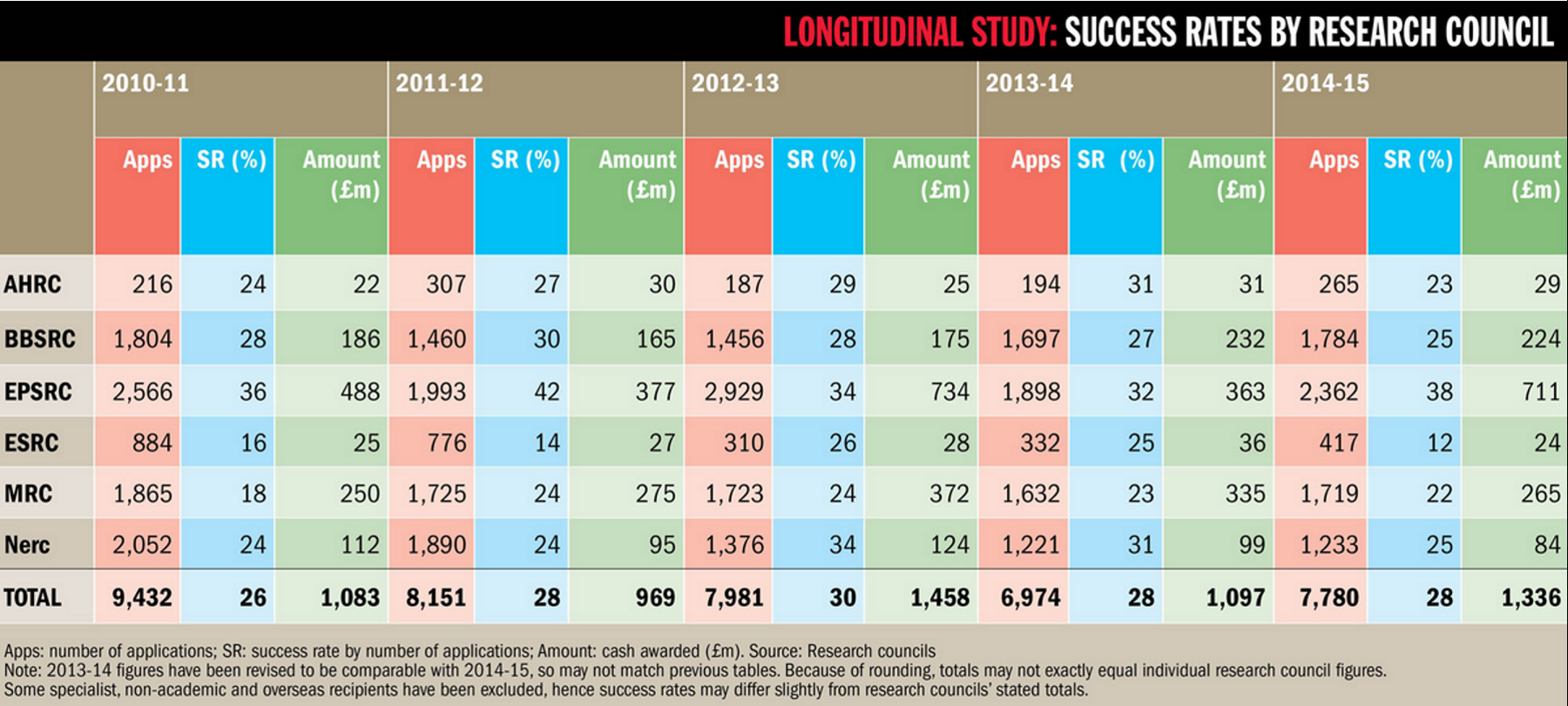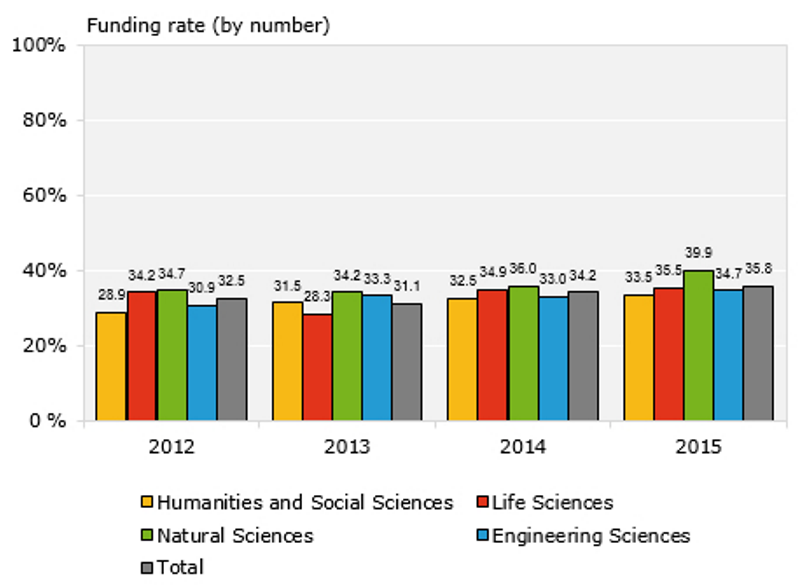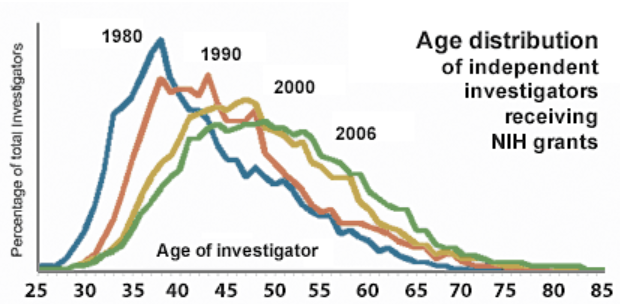Grant success rates in different countries and discipline
- In the UK
a recent summary can be found here where BBSRC (Biotech and Biological Sciences), EPSRC (Eng. and Physical Sciences), ESRC (Economic and Social), MRC (Medical) and NERC (Natural Environmental) are different research councils. Typically then, success rates for grants are between 22% (medical) to 38% (physical).
where BBSRC (Biotech and Biological Sciences), EPSRC (Eng. and Physical Sciences), ESRC (Economic and Social), MRC (Medical) and NERC (Natural Environmental) are different research councils. Typically then, success rates for grants are between 22% (medical) to 38% (physical).
- In the USA
statistics are collected from NSF: http://www.nsf.gov/nsb/publications/2014/nsb1432.pdf, which gives per proposal success rates in 2001 of 29%, in 2015 of 19% (while the number of PIs increased in the same time by 41%). Note these include small grants for early career younger researchers, which inflate success rates. For the NIH: http://report.nih.gov/NIHDatabook/Charts/Default.aspx?showm=Y&chartId=275&catId=2, rates are generally now <20% for research grants.
- In Germany
funding rates in different disciplines from 2012 to 2015 [http://www.dfg.de/en/dfg_profile/facts_figures/statistics/processing_times_success_rates/index.html] show success rates around 35% for all disciplines.
show success rates around 35% for all disciplines.
- In the EU
[http://www.timeshighereducation.com/championship-form-uk-leads-european-research-council-cash] the success rates for ERC Advanced grants are 8.3% in 2015. By country these are UK (9.7%), Belgium (11.1%), Germany (12.1%), the Netherlands (12.2%), Denmark (18.2%), Switzerland (19.3%), Israel (4.9%), among others.
For Horizon 2020 [http://ec.europa.eu/programmes/horizon2020/en/horizon-2020-statistics] the success rate now is 13% (compared to 20% in the FP7 previous funding programme).
- In China
the 2015 data [http://www.nsfc.gov.cn/publish/portal0/tab104/] shows success rates of more than 20%-30%. If in an elite Chinese university, in fact this rate will be like more than 50%. Official rates show 20-35% for some government national programmes, with less for more competitive international programmes. However many researchers do not experience this sort of success rate, which can be due to concentration in particular areas within disciplines (‘bandwagon areas’), concentration in certain locations, and also less spent on unsolicited proposals rather than directed research programmes.
- Age distribution of grant success
There has been comments that younger scientists find it harder to get independent grants now. For instance data from the NIH in the USA shows this clearly [http://blogs.discovermagazine.com/intersection/2009/12/18/great-science-great-scientists-and-funding/#.WeN8VTCJjSG]. It is likely to be rather different in different disciplines and different countries, though I have not seen comparative data on this. I suspect that among physical scientists in the UK, the data are much more evenly spread in terms of numbers of grants, though high value grants still accrue to older researchers.
[http://blogs.discovermagazine.com/intersection/2009/12/18/great-science-great-scientists-and-funding/#.WeN8VTCJjSG]. It is likely to be rather different in different disciplines and different countries, though I have not seen comparative data on this. I suspect that among physical scientists in the UK, the data are much more evenly spread in terms of numbers of grants, though high value grants still accrue to older researchers.